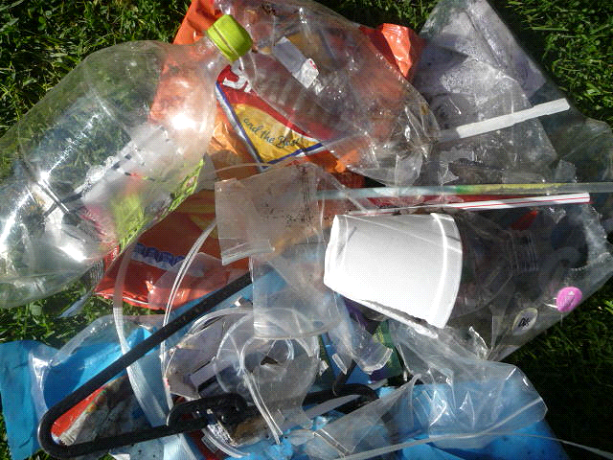We consume a credit card worth of plastic each week. What is it doing to our health?
Posted on April 8, 2023 by DrRossH in Plastic Waste NewsA report published in March found there are more than 170 trillion microplastics floating on top of the world’s oceans.
This has harmful ramifications for the environment and for marine life, including “Plasticosis”, a novel disease where plastic exposure causes extensive scar tissue and fibrosis in seabirds. Less is known about the human health impact of these plastics – which have been found everywhere from women’s placentas to polar bears.
“These plastics are PBTs. Persistent: they don’t ever completely break down; bio-accumulative: they continue to build up in living organisms and, now toxic,” says the Sydney-based father of three. “While we let industry argue over whether these studies provide sufficient, evidence of harm, the world my kids are going to inherit is filling up more and more with plastic.”
So, what can we do about it?
Microplastics are the tiny fragments that break down from larger plastics including bottles, car tires, beauty products containing plastic beads, cigarettes, clothing and bedding made from synthetic fibres.
“The current research suggests single-use plastic bottled water is one of the primary avenues for microplastic to enter the body,” says Harvey, “so moving away from bottled water consumption would be one effective way for individuals to reduce potential exposure to microplastics.”
We can also avoid plastic wrapping and other single-use plastics (e.g. plastic bags), 98 per cent of which are from fossil fuels.

 How many people today grab a takeaway coffee cup from the local cafe to drink on the go? We don’t know, but the number must be enormous.. Most every one of the above have a plastic top that will last 100s of years. Some cafes still use plastic cups that last a similar time. Is 10 minutes of coffee worth 100s of years of trash?
These items can be seen littering our gutters and on our streets all over the place. If they were all cardboard, they would still be littered, but they would, at least, be gone in a short time.
They do not need to be made of plastic.
How many people today grab a takeaway coffee cup from the local cafe to drink on the go? We don’t know, but the number must be enormous.. Most every one of the above have a plastic top that will last 100s of years. Some cafes still use plastic cups that last a similar time. Is 10 minutes of coffee worth 100s of years of trash?
These items can be seen littering our gutters and on our streets all over the place. If they were all cardboard, they would still be littered, but they would, at least, be gone in a short time.
They do not need to be made of plastic.
 On the way home from the gym last week, a distance of about 1 km (1/2 mile), I counted the items of plastic litter on the curb as I walked. In that short distance I counted 63 pieces of plastic litter. Plastic drink bottles, bottle tops, candy wrappers, plastic film, polystyrene fragments etc. That seemed to be a lot to me. I guess it is a generational thing. Our parents would have been horrified to see that amount, whereas it seems to go unnoticed by our youth of today. In another 20 years how many pieces will there be on this stretch, -- 200? What will today’s youth think of that new amount then when they are older? Will their children be so readily accepting of a higher amount of litter?
On the way home from the gym last week, a distance of about 1 km (1/2 mile), I counted the items of plastic litter on the curb as I walked. In that short distance I counted 63 pieces of plastic litter. Plastic drink bottles, bottle tops, candy wrappers, plastic film, polystyrene fragments etc. That seemed to be a lot to me. I guess it is a generational thing. Our parents would have been horrified to see that amount, whereas it seems to go unnoticed by our youth of today. In another 20 years how many pieces will there be on this stretch, -- 200? What will today’s youth think of that new amount then when they are older? Will their children be so readily accepting of a higher amount of litter? 
Discussion · No Comments
There are no responses to "We consume a credit card worth of plastic each week. What is it doing to our health?". Comments are closed for this post.Oops! Sorry, comments are closed at this time. Please try again later.